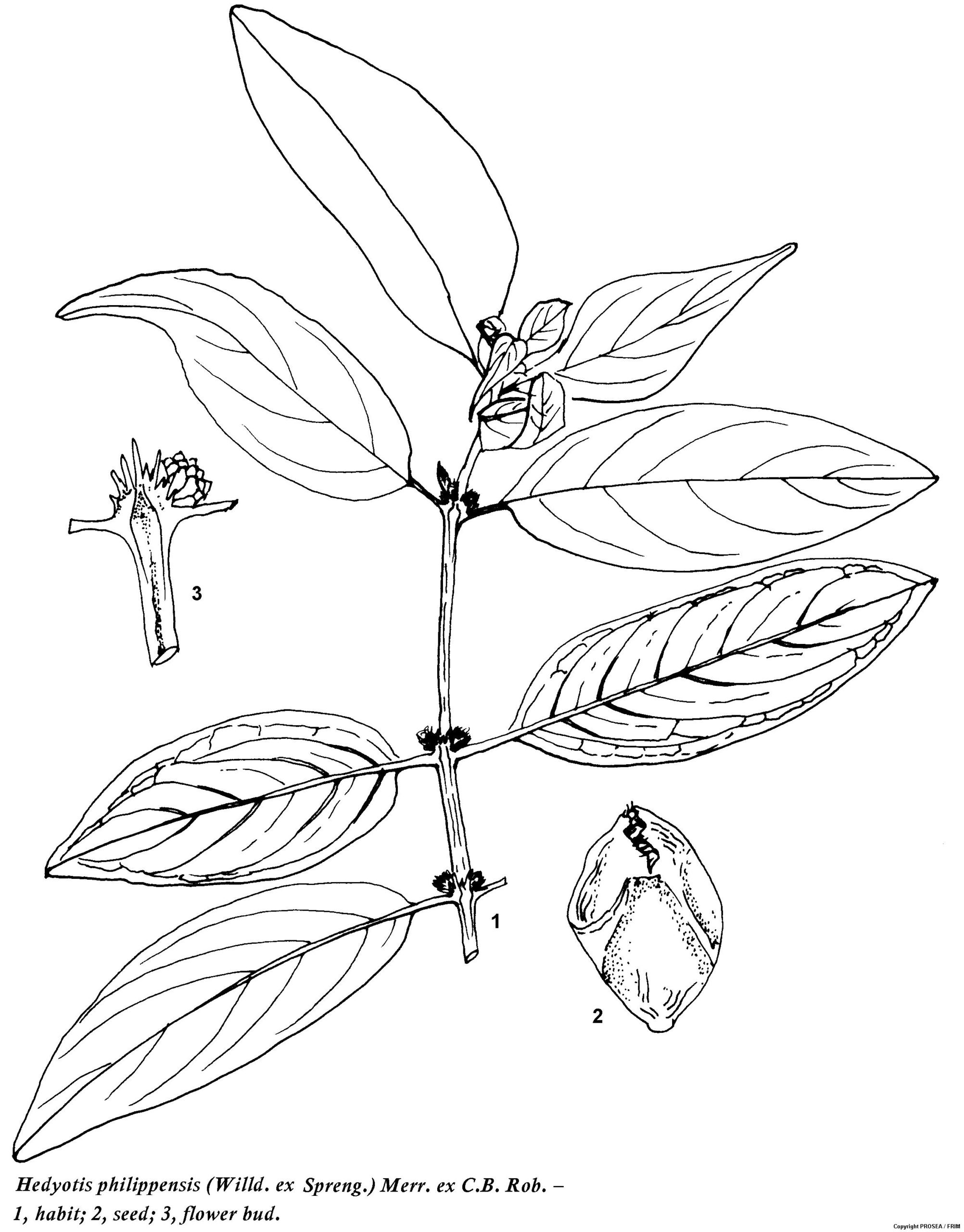Hedyotis philippensis (Willd. ex Spreng.) Merr. ex C.B. Rob.
Family
Rubiaceae
Synonyms
Spermacoce philippensis Willd. ex Spreng., H. congesta Wallich & G. Don.
Vernacular Names
| Malaysia | Sebueh, bunga kakarang. |
| Philippines | Magdadakan (Samar-Leyte Bisaya), dilang-butiki (Tagalog), pulapasagit (Panay Bisaya). |
| Thailand | Mae klon, saam nam (Peninsular). |
| Vietnam | an di[eef]n philippin. |
Geographical Distributions
Hedyotis philippensis is widely distributed from Thailand to Indonesia, the Philippines, Papua New Guinea and northern Australia.
Description
H. philippensis is a perennial, spreading subshrub, up to measure 1.2 m tall and openly branched. The stems are slender and often hairy when young.
The leaves are variable, narrowly oblong in shape, with a size measure 4-11 cm x 1-3.5 cm, hairless but hairy underneath midvein and shiny above. The terminal leaves are much smaller, lance-shaped and with measuring 3-10 mm long petiole. The interpetiolar stipules are triangular, many setae and up to measure 7 mm long. The cyme is axillary, small and crowded.
The sepal is obconical in shape, measuring 1-2 mm in diameter and smooth. The lobes are measure about 2.5 mm long and glandular appendage between the lobes. The petal is slightly longer than the sepal. The petal tube is measure 2-3 mm long, with oblong lobes which are measure 2-2.5 mm long and spreading.
The measuring 3.5-4 mm long capsule is rounded to ellipsoid in shape, fleshy, whitish and smooth.
Ecology / Cultivation
H. philippensis occurs on sandy soils, in open forest areas, along streams and seasonally boggy localities at low and medium altitudes.
Line Drawing / Photograph
References
- Plant Resources of South-East Asia No. 12 (2): Medicinal and poisonous plants.


